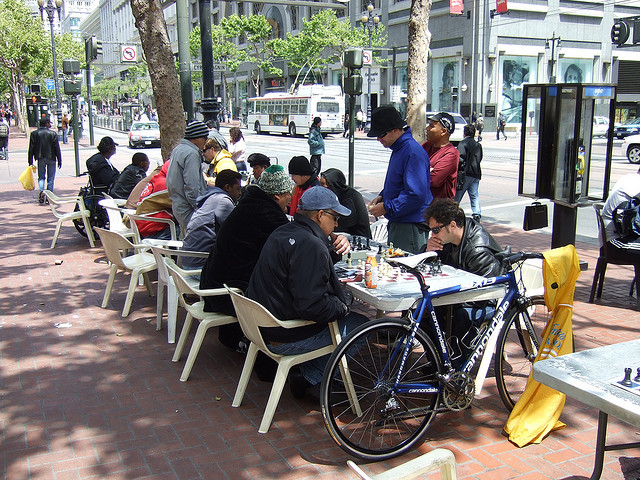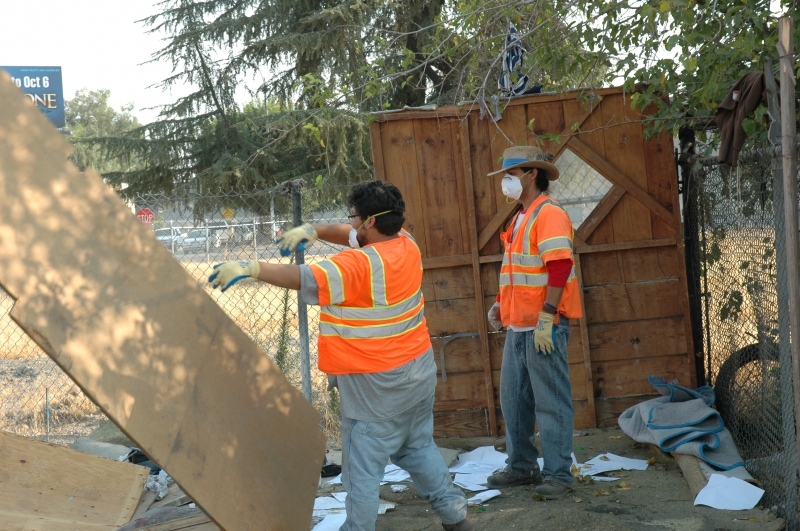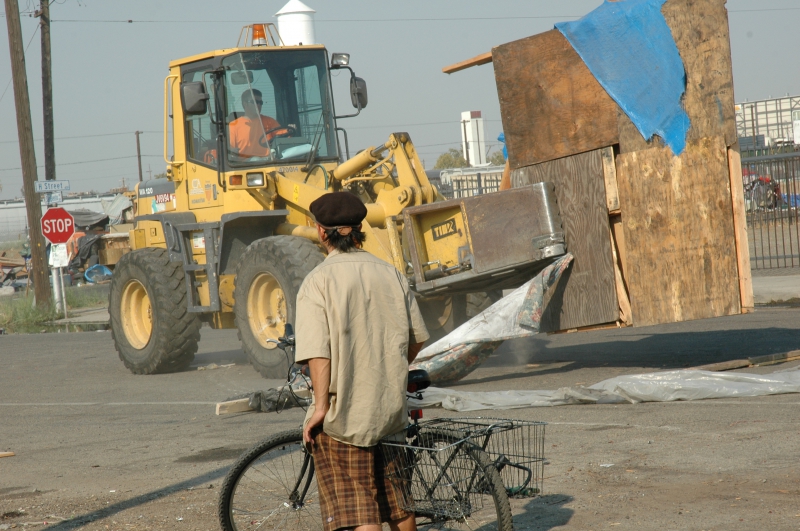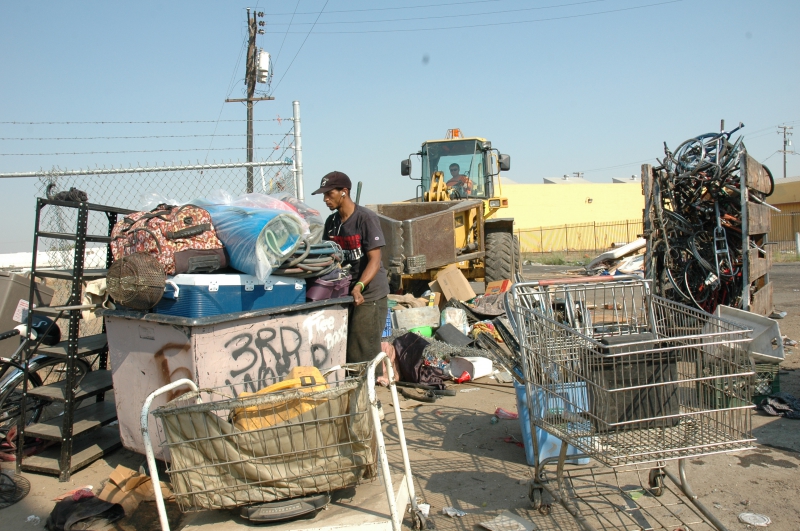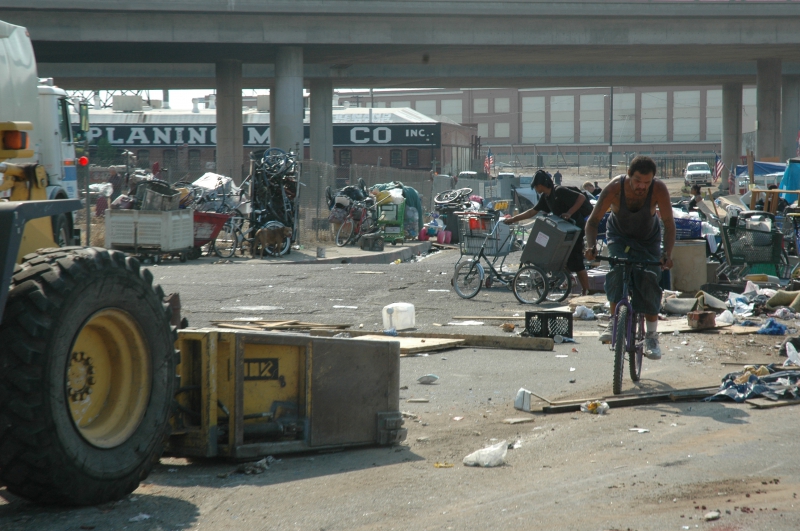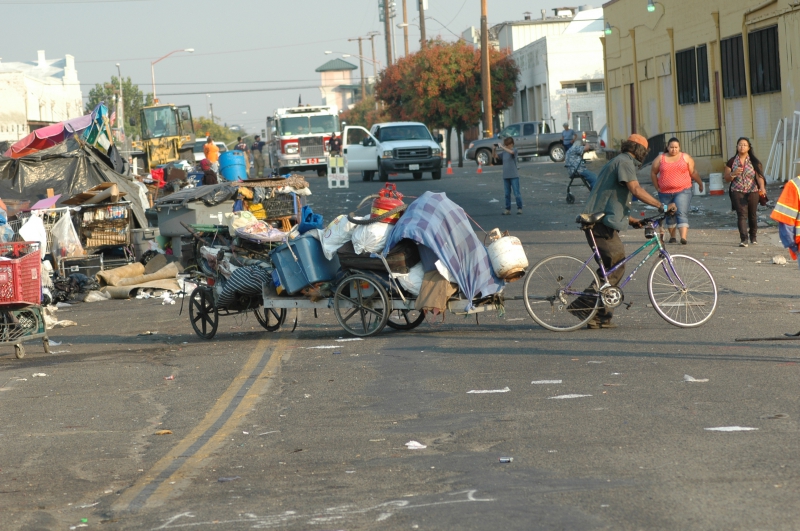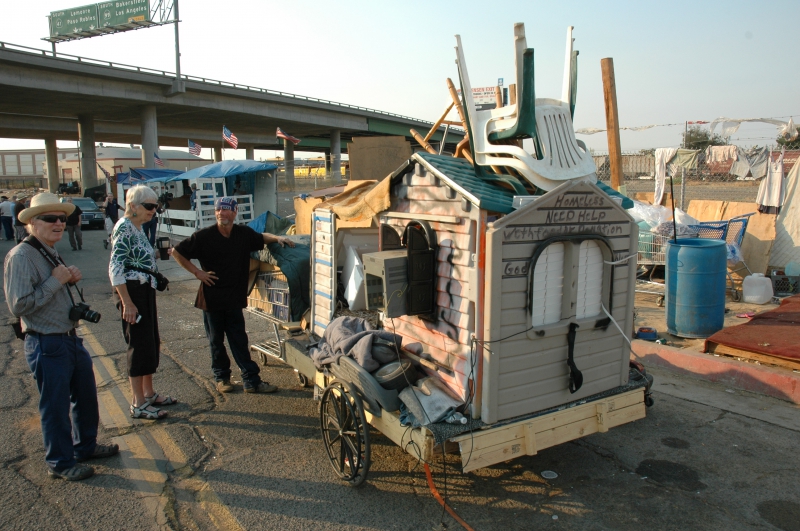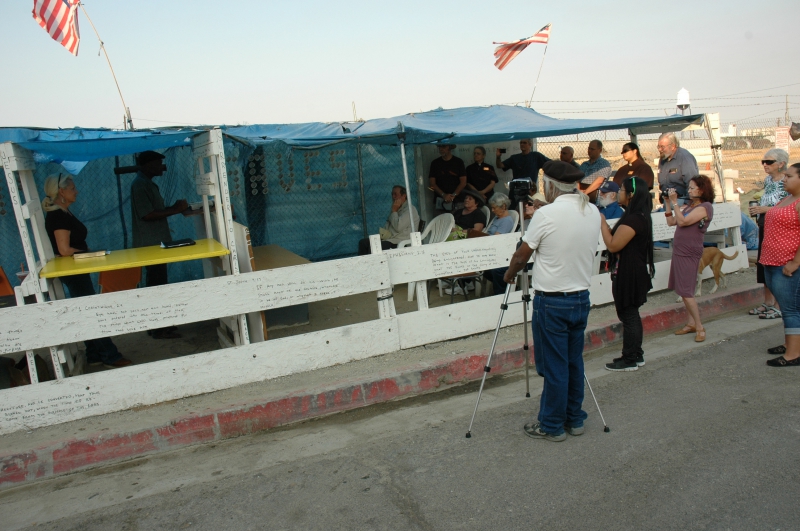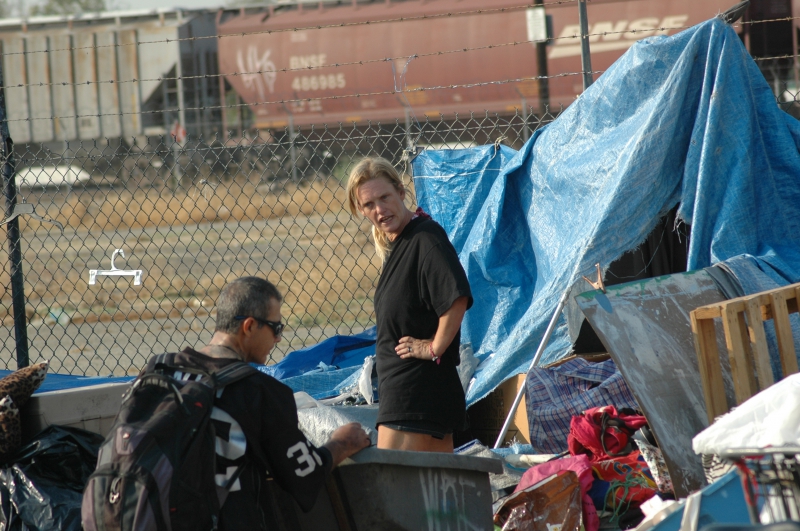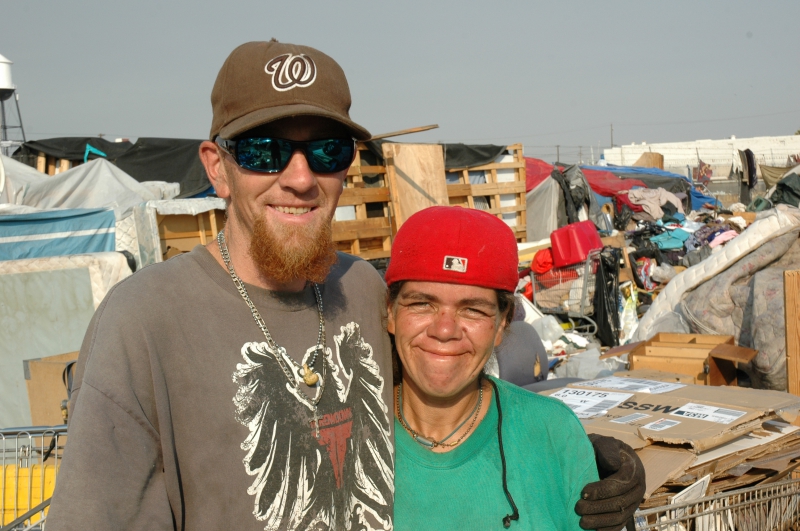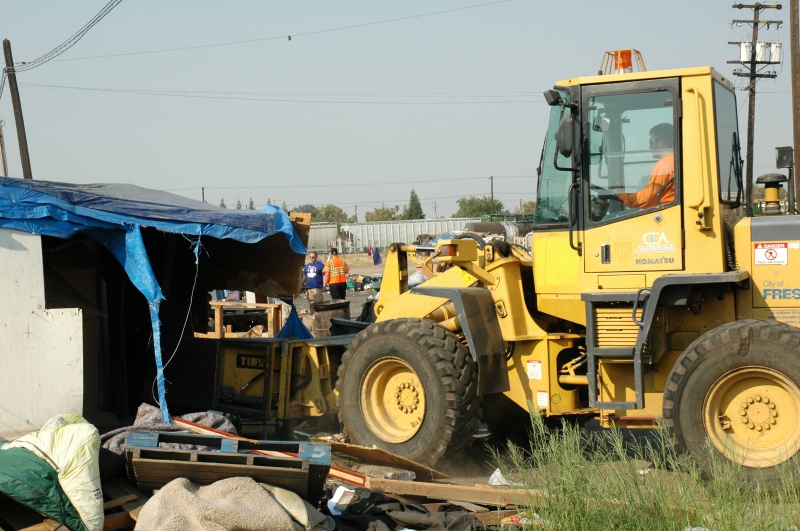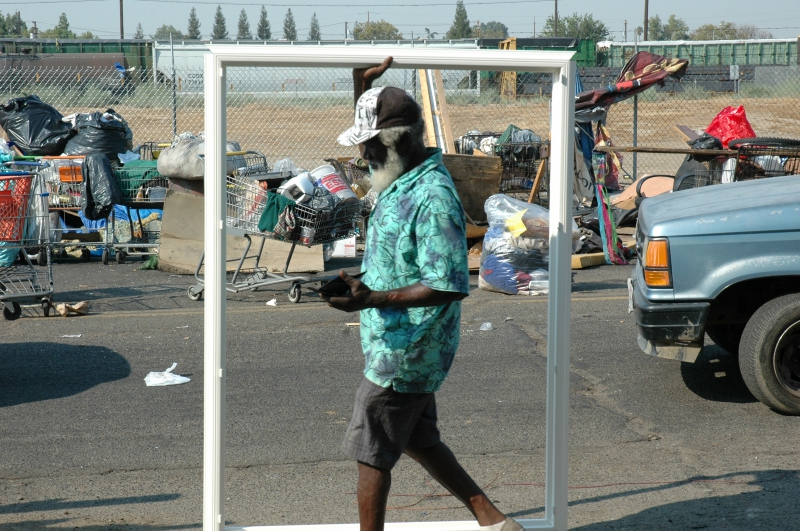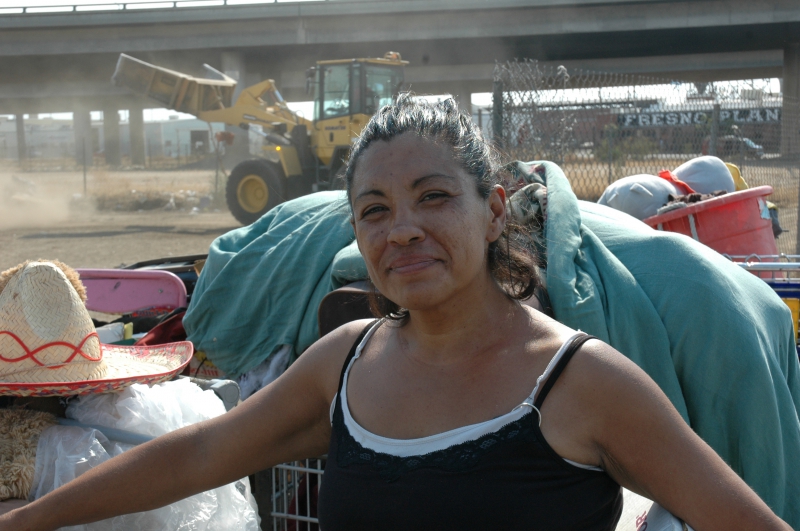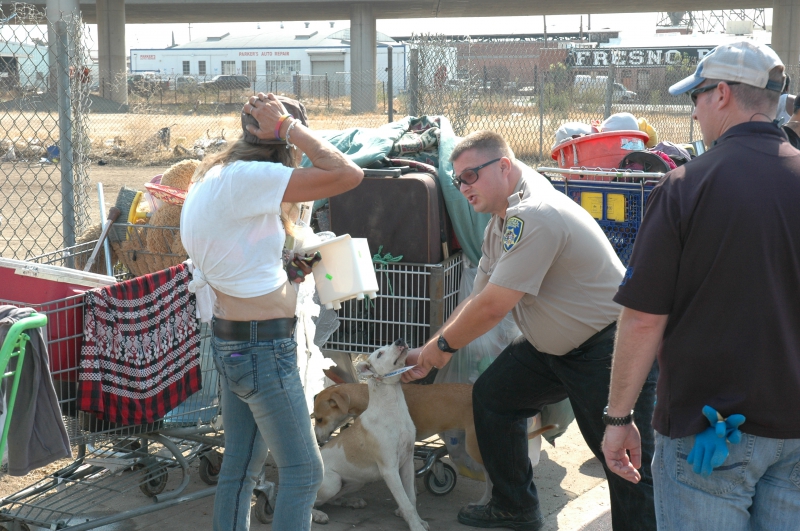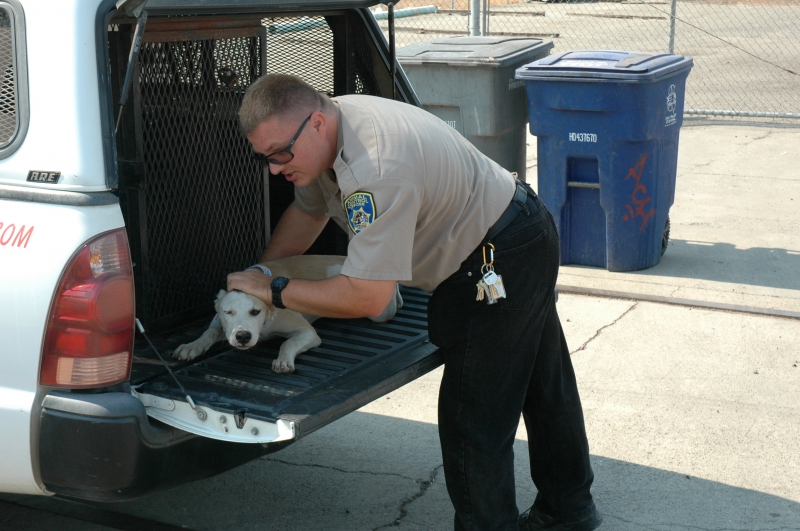Santa Cruz “homeless get out of sight, get out of town” groups and their fans at City Council have recently used phony Public Health & Safety pretests to make Santa Cruz a “less welcoming city” for poor, unconventional, and homeless travelers as well as long-time residents. These have included Take Back Santa Cruz’s “positive loitering” events, pressuring convenience stores to remove payphones, & spending city and county money on a $100,000 + security gate at the Homeless (Lack of) Services Center.
The City’s slimey solution to cracking down on panhandling, once it was ruled constitutional in California by a federal judge in the early 90’s in the Blair decision, was to use “time, place, and manner” restrictions. The only valid justification for limiting peaceful beggins is if it becomes truly threatening or obstructive of pedestrian (or vehicular) traffic. Santa Cruz’s “Aggressive Solicitation” ordinance (MC 9.10 See http://www.codepublishing.com/
Recently a disabled woman in a wheelchair (Glenda) was harassed on the sidewalk out near Kosko’s where she had a perfect right to be–even though abiding by the letter of the panhandling prohibitions–with deputies and SCPD thugs colluding to remove her at the request of some anonymous bigot. This followed threats up at a sidewalk near Safeway on the Westside, even though Glenda reported being in a legal place, okayed previously by police authorities–where police responded to a “get out of town” TBSC-type by falsely demanding she move on, though she was legal right where she was. The examples of repression are becoming more flagrant & more numerous. Check my twice-weekly radio show archives at http://www.huffsantacruz.org/
The Santa Cruz ordinances have never been taken to court in their entireity. The only section that was taken to court was thrown out a decade ago as unconstitutional (See “Powdering The Crooked Nose of The City’s Anti-Homeless Panhandling Law ” at https://www.indybay.org/
Flagstaff, Arizona, to halt its crackdown on panhandling
The Flagstaff City Council agrees to settle a lawsuit that claimed an Arizona law against panhandling and the city’s aggressive enforcement of it were unconstitutional.
The council agreed and voted unanimously to stop enforcing the statute, promising that city officials would no longer interfere with a person peacefully begging in public spaces. But the council left the door open to imposing other restrictions.
The ACLU lawsuit challenged a policy Flagstaff adopted six years ago to remove people from downtown areas by jailing them early in the day on suspicion of loitering to beg. The city had invoked an Arizona statute that makes it a crime to beg in public spaces.
Flagstaff police had arrested an estimated 135 people on suspicion of loitering to beg during one year. In some cases, those people were jailed, said Mik Jordahl, a Flagstaff attorney who is serving as ACLU co-counsel in the lawsuit.
A spokeswoman for state Atty. Gen. Tom Horne said Monday he would not contest the ACLU’s effort to have a federal judge declare the law unconstitutional.
The Flagstaff situation mirrors a national trend of localities and states enforcing or creating laws to deter panhandling and control the movements of the homeless, said Heather Maria Johnson, civil rights director at the National Law Center on Homelessness & Poverty, based in Washington.
Some states have passed similar statutes against begging. Others have invoked old laws, but Flagstaff’s efforts were an example of extreme enforcement, Johnson said.
Courts across the country have ruled that laws against aggressive panhandling and harassment are constitutional. But they’ve also ruled that peaceful begging is protected by the Constitution and cannot be outlawed by states or municipalities.
In March, after the ACLU sued Colorado Springs, Colo., the city scrapped nearly every aspect of an anti-panhandling law it had passed four months earlier.
An anti-panhandling law in American Fork, Utah, met a similar fate after a homeless man filed suit. He had been cited several times for holding a sign on public sidewalks. The city agreed to pay him $750 in damages and more than $5,300 in attorney fees and court costs.
Salt Lake City officials took notice and stopped enforcing a statute that made it illegal to sit, stand or loiter on or near a roadway in order to solicit a ride, money, employment or other business. A federal judge later ruled that law unconstitutional.
Jordahl, the ACLU attorney, lauded the outcome in Flagstaff.
“We are pleased that the hundreds of desperately poor persons arrested under this unconstitutional law in the last several years will no longer face arrest and jailing for simply exercising their right to free speech in a peaceful manner,” he said in a statement.
Flagstaff Police Chief Kevin Treadway said the city had opted to enforce the statute in response to hundreds of residents’ complaints about people loitering or begging for money.
“In our city, this is really a prevalent issue,” Treadway said. “We have citizens contacting us on a regular basis who are intimidated.”
Flagstaff is a tourist hub, with shops, restaurants and university students. The city is also a gateway to the Grand Canyon, with several highways intersecting in town.
Tensions tend to peak during hot months, when the homeless population swells with transients who come to the mountain community to escape the sweltering desert heat.
Treadway said city officials were in the process of developing a new ordinance. This time, he said, it would target aggressive panhandlers.
cindy.carcamo@latimes.com
MORE COMMENTS AT: http://www.latimes.com/nation/
‘Begging is not a crime,’ ACLU says in suit against Flagstaff
TUCSON — The American Civil Liberties Union of Arizona filed suit Tuesday against the city of Flagstaff, accusing municipal leaders of unconstitutionally driving beggars off the streets and criminalizing peaceful panhandling in public places.
“Begging is not a crime,” Arizona ACLU Legal Director Dan Pochoda said in a statement. “To appease local business interests, Flagstaff has sacrificed the fundamental rights of individuals and is throwing people in jail for simply for asking for a dollar or two for food.”
The complaint challenges a policy adopted by the city six years ago to remove people from downtown areas by jailing them early in the day on suspicion of “loitering to beg.” City officials have used a state statute that makes it a crime to beg in all public spaces.
Flagstaff police made 135 such arrests from June 2012 to May 2013, according to the ACLU.
Flagstaff Police Chief Police Kevin Treadway did not return a call for comment.
City Atty. Michelle D’Andrea said Flagstaff officials could not comment until they had reviewed the lawsuit and drafted a response.
“The city typically does not comment on pending litigation and will file a response to the lawsuit in a timely manner,” D’Andrea said in a statement.
The three plaintiffs named in the suit include Marlene Baldwin, a 77-year-old Hopi woman who ACLU officials said is disabled and losing her eyesight. She was arrested in February on suspicion of loitering to beg after asking an undercover police officer if he could spare $1.25 for bus fare, according to the complaint.
Mik Jordahl, a Flagstaff attorney who is serving as co-counsel in the lawsuit, said that although laws against aggressive panhandling and harassing solicitations have been found to be constitutional, states and cities cannot legally outlaw peaceful begging.
“When the most downtrodden among us are arrested and punished for the peaceful content of their speech, then none of our free speech rights are guaranteed,” Jordahl said.
MORE COMMENTS AT http://www.latimes.com/news/
HOMELESS DEPORTATION MASQUERADING AS “SMART COMPASSION”:
Even in Beverly Hills, helping homeless is a struggle
There are fewer homeless people in Beverly Hills than on skid row, but they too are entrenched street dwellers. Helping them takes persistence.
Beverly Hills doesn’t have many homeless people — roughly 30, give or take. But the ones it does have are stubbornly inclined to stay right where they are, living in their own minds and on their own terms, practically in the shadow of multimillion-dollar mansions.
Why?
“It’s safe,” said Jim Latta, the city’s human services administrator, who knows every one of the city’s homeless people by name. People living on the streets don’t have to watch their backs the way they would on skid row or in Venice.
Kevin Conner, an outreach worker, offered another explanation as well.
“The residents of Beverly Hills give to the homeless,” Conner said.
Amy backed him up on that. She lives on a bench in the park that runs along Santa Monica Boulevard, and when I asked how she gets by, she pointed to the nearby church.
“I stand against that wall during Sunday Mass,” said Amy, a senior citizen. When Mass lets out, parishioners — lifted by the spirit — reach into their pockets. Amy said she makes enough to hop on a bus and go to the Farmer’s Market at 3rd and Fairfax, where she does her shopping.
But Conner said that only makes his job harder.
“If a parishioner gives her everything she needs, she doesn’t need me,” he said. Which is why he hands donors a card that says, “Positive Change, Not Spare Change,” and, “Please give to a charity, not a panhandler.”
It’s not as if City Hall doesn’t get complaints about homeless people from merchants and residents. But most of the gripes are about panhandlers, many of whom don’t live in Beverly Hills but drift in to tap locals and tourists.
The city banned so-called aggressive panhandling. But five years ago, it hired Step Up On Second, a Santa Monica nonprofit, to help look after homeless people and try to steer them into services. Only four people have been permanently housed in that effort, but many others have been cared for at least temporarily at People Assisting the Homeless, a Hollywood nonprofit that provides six beds nightly for Beverly Hills’ street dwellers.
That might make it sound as though the goal is to push the homeless beyond the borders of Beverly Hills, and I’m not holding my breath waiting for the city to open a Step Up On Rodeo. But after a day of making the rounds with Latta and the Step Up outreach team — Conner and his partner Annie Boyd — it looked to me as though the goal is to make regular contact with a very sick population, earn some trust and jump on any opportunity to offer life-changing help.
Latta said that when he speaks to local groups about his work, he points out that his subjects are a little harder to help than Nick Nolte‘s lovable vagabond character in the movie “Down and Out in Beverly Hills.” That chap ends up sleeping with the maid of a rich, dysfunctional family and enjoying the city’s fine dining. Latta’s people, meanwhile — like many entrenched street dwellers in any community — are fighting severe mental illness and barely hanging on. Some of them tip a bottle to ward off waves of despair, only to sink further into the depths.
Latta, a career mental health and social worker, keeps a photo of a guy named Al in his office. Al was a steady, benign presence near the Gap store on North Beverly. Though he didn’t ask for money, passersby gave him enough to survive despite mental and physical illness, and he resisted efforts by the outreach team to get him treated and housed. By night, he lived behind a dumpster in an alley with the blessing of a merchant, until he became so physically ill that he finally agreed to go to a hospital. A few days after being admitted, he was dead.
“Many want help but struggle to make a change,” Latta wrote in a letter to the editor at the time of Al’s death. “It took more than two years for our gentleman to decide whether to stay with his miserable but known world or try the alternatives provided by the outreach team.”
When we met up with Amy, who is very sick physically and otherwise, Latta was wrestling with memories of Al and wondering whether — if Amy continues to refuse help — the humane option might be an involuntary commitment.
A few blocks away, we met with a man who finally accepted housing recently, only to land back on the streets. “If I can get the church to come up with the money, I’m going to come by and see if I can take you to an apartment,” Latta told the man, who nodded in approval.
Beverly Jermyn, an L.A. resident, told me that this kind of persistence paid off in the case of her brother. John Jermyn, who was homeless for 30 years and would often dance his days away on Robertson Boulevard, moved into an apartment at Step Up On Vine in April.
“He had no hope of getting off the street until this wonderful outreach team worked with him,” Beverly Jermyn said.
John Jermyn, who played minor league baseball in the Dodgers‘ farm system 40 years ago, sleeps in his Hollywood apartment by night but still can’t resist Beverly Hills by day. I met him at Will Rogers Memorial Park on Sunset, where he said he couldn’t talk long because he had lots of dancing to do.
I asked what it was like to live indoors after so many years under the stars.
“It has its benefits,” he said, and then he was lost in motion.
steve.lopez@latimes.com

